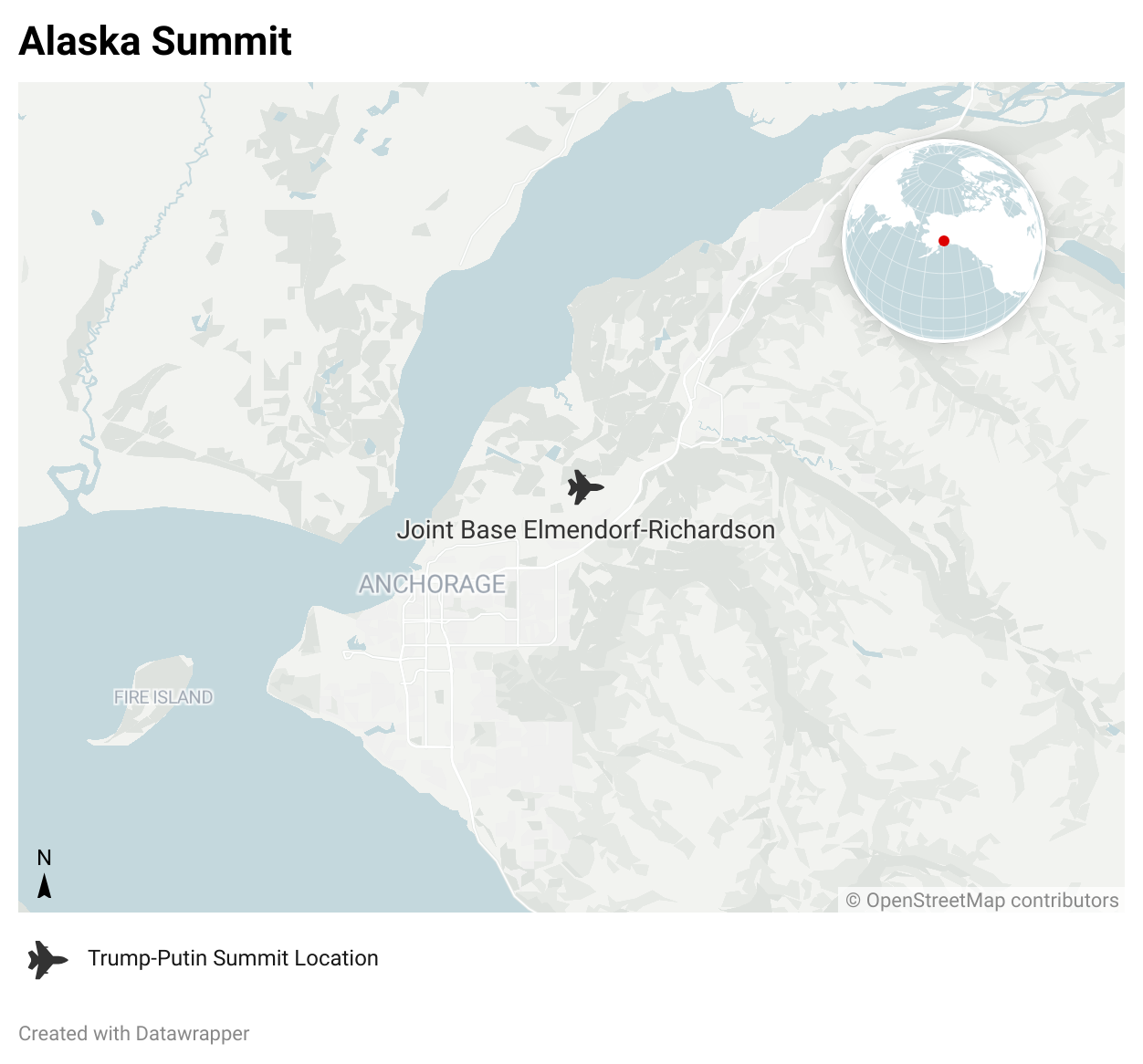Trump–Putin Summit: Why the Meeting Matters More Than Ukraine
By Andrea Stauder | 17 August 2025
Summary
The Alaska Summit on 15 August 2025 at Joint Base Elmendorf-Richardson yielded no concrete progress on the Ukrainian War, while providing Russian President Vladimir Putin with symbolic recognition as US President Donald Trump positioned himself as a potential broker of future peace.
Discussions focused more on US–Russia bilateral issues and Arctic cooperation than on Ukraine. For Putin, the meeting was a clear diplomatic win; for Trump, a partial success framed as a personal achievement.
With no tangible progress towards a settlement, the war in Ukraine is highly likely to continue. Trump will meet with Ukrainian President Volodymyr Zelenskyy on 18 August 2025, but Kyiv and its European allies remain determined to resist any territorial concessions, likely prolonging the conflict into 2026.
Since the start of the Ukrainian War, no direct contact occurred until Donald Trump’s inauguration in January 2025, which was followed by several calls with Putin and a US–Russia meeting between delegations in Riyadh, Saudi Arabia, on 18 February 2025. Excluding Putin’s attendance at the 70th United Nations General Assembly in New York in 2015, it had been 18 years since his last official visit to the US, when he met former US President George W. Bush in Kennebunkport, Maine.
The Alaska Summit last week was a political victory for both presidents. Trump can claim to have persuaded Putin to negotiate despite the lack of tangible results, while the Russian President saw his long-sought great power status acknowledged. The meeting took place in Alaska, a territory emblematic of US–Russian relations and their imperial legacies. Colonised by the Russian Empire in the 18th century and sold to the US in 1867, Alaska also holds enduring strategic value for mineral resources and the race for the Arctic. This was a summit of great Arctic and Pacific powers, focused, practically and symbolically, less on Ukraine and more on the broader US-Russia relationship.
Despite the 2023 International Criminal Court arrest warrants, Putin faced no obstacle in visiting US territory, as neither Washington nor Moscow is a signatory to the Rome Statute. Another reason for choosing Alaska: the avoidance of European airspace that has remained closed to Russia. As the first ever Russian leader to visit Alaska, Putin arrived with clear objectives: negotiating from a position of battlefield strength, he expected immediate sanctions relief in any ceasefire deal, Ukrainian territorial concessions, neutrality, and limits on Kyiv’s armed forces. Yet Ukraine was not the primary focus. Having already secured a symbolic status victory, Putin also sought an Arctic agreement with Washington on investment and resource governance. For Moscow, “re-resetting” relations with the US while finding a credible alternative to an increasingly dominant China remains paramount.
Trump’s objectives remain opaque. Despite a recent thaw with Zelenskyy and mounting frustration with Putin, he had suggested the possibility of land swaps as an option while vowing to help Ukraine reclaim some Russian-occupied areas. Months of oscillation between support for Kyiv and concessions to Moscow make his true intentions difficult to discern. However, it is clear that Trump desires to be presented as the peacemaker, as seen previously in the India-Pakistan, Armenia-Azerbaijan and Cambodia-Thailand ceasefires, which he was put forward as the mediator. Although US Secretary of State Marco Rubio described the meeting as “not a concession” to Putin, the Russian President clearly perceived it as such, while Trump presented it as a personal success. Kyiv, supported by the European Union (EU), continues to firmly reject any territorial concessions.
Although the absence of a ceasefire or tangible agreement disappointed commentators, there was a remote chance for such an outcome before the talks. The summit was ultimately more about Putin and Trump than about Ukraine. Over nearly 3 hours, they discussed visas, the fate of Russian diplomatic properties seized in the US, the resumption of direct flights, and Arctic cooperation. For Putin, welcomed on a red carpet after years of Western efforts to cast him as a pariah, the meeting was a clear victory. For Trump, it was a partial success: he can still point to his efforts to open negotiations and pursue peace. Europe, notably absent, suffered a diplomatic setback and paradoxically Kyiv will feel relief that no deal emerged. Putin stressed his determination to end the conflict while reiterating Russia’s stance on its root causes, yet signalled readiness to consider security guarantees for Ukraine. Yet even without concrete or visible progress, the Anchorage meeting represents a distinctly positive signal—for US–Russia relations, though not for Kyiv.
The White House/X
Forecast
Short-term (Now - 3 months)
Trump will meet Zelenskyy on 18 August 2025 in Washington.
The war is highly likely to continue and may even intensify before winter as no tangible agreements were reached from the Alaska Summit.
The US is highly unlikely to impose new sanctions on Russia or its trading partners following the Alaska Summit, as the talks went “very well”, based on Trump’s accounts.
Medium-term (3-12 months)
Kyiv’s answer and posture will almost entirely depend on US and European support. Ukraine is therefore highly likely to keep fighting and hold on its posture against any “unjust” peace as long as it is politically, financially and militarily backed from the US or at least EU countries.
A second US–Russia summit, potentially in Moscow as suggested by Putin, remains a realistic possibility if bilateral relations continue to develop positively.



